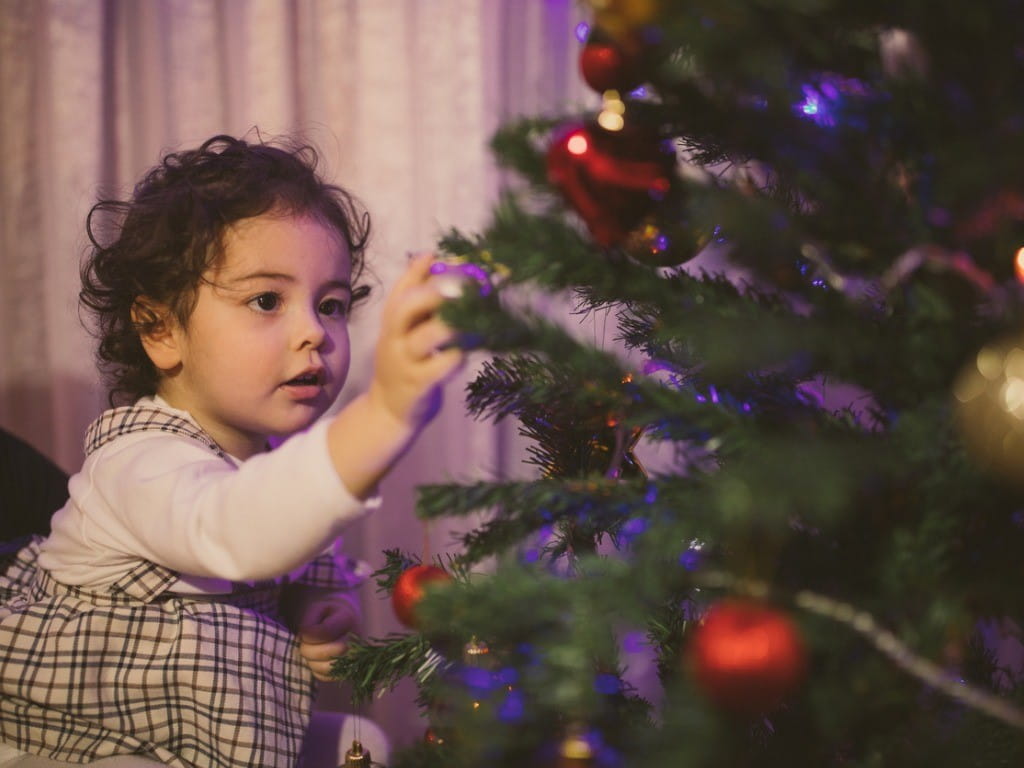Christmas Ornament Hazards

The Bottom Line
Glass Christmas ornaments can be attractive to young children and can break easily. Stepping or crawling on the glass is a problem, but some ornaments also contain lead, mercury, or methylene chloride, which can poison children if they touch, taste, or swallow them. Even though they are sharp, small glass pieces usually pass through the digestive tract uneventfully.

The Full Story
In the days leading up to and following Christmas, Poison Control will most certainly be helping families and healthcare providers with concerns regarding broken glass ornaments.
When any foreign body is swallowed, it typically comes with the risk of choking or blocking the airway. The esophagus leads to the stomach, the airway leads to the lungs. They are right next to each other (If you are on your back, the airway is on top). The foreign body could fall into the airway and stop air from passing through. Children have small airways and are at a greatest risk of choking. If the foreign body makes it into the esophagus, then we worry about it getting caught in the esophagus on the way to the stomach. We often think of the esophagus as a hose or tube. It is actually collapsed on itself until a food or fluid bolus goes through. When something gets stuck in the esophagus, it is hard to get it unstuck. With glass pieces, there is also the additional concern of it causing internal injury. Check the mouth for blood or other signs of injury, and watch closely for any indication that the child is in pain. Small pieces of glass often pass through the digestive tract without causing harm, but over the next few days you should watch for dark stools or blood in the stools.
Lead paint is a concern with imported ornaments and very old ornaments. A child might swallow some chips of paint while mouthing an ornament. Ornaments are not held to the same standards as children's toys to be free of toxins like lead. If you are concerned about lead, most home improvement stores sell at-home lead detection kits that will change color if lead is present. These are not 100% accurate, but they could provide some peace of mind or inform a decision about having a blood lead level measured. Poison Control can help you determine if and when someone needs to have a blood lead test.
Antique ornaments can pose other poison hazards. For example, "mercury glass" has become popular again. New mercury glass does not contain any mercury. If these are broken, there is no additional toxicity beyond the sharp fragments of broken glass. Antique ornaments could contain a small amount of mercury mixed with other metals trapped between the two glass layers of the ornament's walls. If you have an old mercury glass ornament that breaks, call Poison Control, which will walk you through how to air out the room carefully and clean up any mercury. These steps are very easy to take, and it makes sense to follow them even though it is unlikely that there would be any great danger.
While increasingly rare, older ornaments that could pose a danger are bubble lights. These lights were popular in the 1950s through 1970s. When the lights were turned on and warmed, little bubbles would circulate through the lights. Although bubble lights were charming, the fluid inside was a poison—methylene chloride, which is the major ingredient in many paint strippers. When swallowed or even touched, this liquid will be converted to carbon monoxide in the body. Keep the original packaging for bubble lights if their ingredients are listed. Early signs of carbon monoxide poisoning include dizziness, drowsiness, nausea, and headache.
If someone has swallowed part of a glass ornament, please log onto the webPOISONCONTROL® online tool for guidance or call Poison Control at 1-800-222-1222. Whether you log on or call, expert assistance is available 24 hours a day.
Pela Soto, PharmD, BSHS, BS
Certified Specialist in Poison Information
Poisoned?
Call 1-800-222-1222 or
Prevention Tips
- Consider keeping glass ornaments in storage until children are at least 6 years of age. (Children under 6 years of age make up the majority of calls to Poison Control.)
- Even if glass ornaments are put up high on a Christmas tree, they might still be knocked down. Make sure all ornaments are secured to a branch.
- If you are worried that a glass ornament might contain lead, keep a piece in a safe container to do a test.
This Really Happened
In 2012, JC Penney had to recall thousands of toys and art sets along with 2,400 ornaments that were found to have unsafe levels of lead in them. The ornaments were commemorative for the year 2006 and made in China. The ornaments were not associated with any known lead poisoning events. Recalls can happen years after a product is sold. Check out the Consumer Product Safety Commission at www.cpsc.gov where they post pictures and descriptions of recalled items.For More Information
Snow D. Glass Christmas ornaments. Stafford (VA): Glass.com; 2018 Nov 30 [cited 2020 Dec 1].
References
Poisoned?
Call 1-800-222-1222 or
Prevention Tips
- Consider keeping glass ornaments in storage until children are at least 6 years of age. (Children under 6 years of age make up the majority of calls to Poison Control.)
- Even if glass ornaments are put up high on a Christmas tree, they might still be knocked down. Make sure all ornaments are secured to a branch.
- If you are worried that a glass ornament might contain lead, keep a piece in a safe container to do a test.
